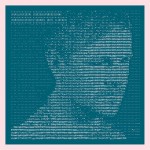VALGEIR SIGURÃSSON: Architecture Of Loss (Bedroom Community)
By themilkman
Posted on Sep 12th 2012 01:51 am
Filed in Albums | Tags: Bedroom Community, Valgeir Sigurðsson
Comments (0)
VALGEIR SIGURÃSSON
Architecture Of Loss
HVALUR13
Bedroom Community 2012
10 Tracks. 38mins02secs
![]() Amazon UK: CD | LP US: CD | LP
Amazon UK: CD | LP US: CD | LP
Musician, composer, arranger, producer, curator, label head… the range of activities covered by Valgeir Sigurðsson is pretty extraordinary. This has led him to work with artists as diverse as Björk, Hildur Guðnadóttir, CocoRosie, Maps, Feist, The Magic Numbers or Bonnie ‘Prince’ Billy, but it is the small cluster of like-minded musicians and composers (Nico Muhly, Sam Amidon, Ben Frost, DanÃel Bjarnason) he has gathered on Bedroom Community, the imprint he set up six years ago in Reykjavik, Iceland, which constitutes the most exciting and rewarding part of his work. Bedroom Community has always functioned like a collective of artists rather than like a standard record label, resulting in each artist substantially contributing to the work of his stable mates.
Architecture Of Loss, Sigurðsson’s third album, following EkvÃlÃbrium (2007) and Draumalandið (2010), was originally conceived as the score for a ballet of the same name by American choreographer Stephen Petronio, and was consequently adapted to work as a stand-alone piece. Working alongside Sigurðsson are composer and pianist Nico Muhly, violist Nadia Sirota, who also contributed to Muhly’s recent Drone series, multi-instrumentalist Shahzad Ismally and trombone player Helgi Hrafn Jónsson.
The album opens with a deep, barely audible, humming sound which lingers for some time until a swarm of droning strings, real and processed, covers it entirely. The rumbling drone on a viola waxes and wanes relentlessly as violas buzz around it for a brief moment before dissipating. With The Crumbling, the second piece on this album, Sigurðsson brings in more processed string works in which are woven delicate layers of viola and piano. The pace is measured, the tone sober, and Sigurðsson’s electronic processing remains for the most part relatively discreet, often acting as delicate punctuation rather than as overwhelming feature.
This is actually the case with most of the pieces here; on World Without Ground, his presence is reduced to a sparse rhythmic motif which only appears in the second half; piano and viola form the core section of Erased Duet or Plainsong, with only a few textural hints scattered here and there. Textural touches, taking the form of micro glitches and statics, appear more prominently on Between Monuments, and Sigurðsson injects a hefty set of percussions in the last segment of the piece. On Reversed Erased later on, he appears to adopts a typewriter-rhythmic style for a moment, but this builds up to be more substantial as the piece gathers momentum, whilst he assembles a fractured electronic beat on Big Reveal. Closing piece Gone Not Forgotten, exclusive to this album, is a somewhat brooding which once again focuses primarily on strings, with occasional strips of synth filtering through.
In this incarnation, Architecture Of Loss was created to work as a stand-alone piece, independently from the ballet it was originally written for, and this is very much what Valgeir Sigurðsson has achieved here. Regardless of its initial purpose, the music follows its own narrative and forms a coherent whole, with definite start and end points. For the occasion, Sigurðsson appears to bridge the gap between the primarily electronic textures and ambience of his debut and the sweeping orchestral feel of his second album to create a vastly different set up, which intrigues and fascinates in equal measures.
4.6/5
![]() Valgeir Sigurđsson | Bedroom Community | Bedroom Community Shop | Stephen Petronio Company
Valgeir Sigurđsson | Bedroom Community | Bedroom Community Shop | Stephen Petronio Company
![]() Amazon UK: CD | LP US: CD | LPÂ
Amazon UK: CD | LP US: CD | LPÂ
Filed in Albums | Tags: Bedroom Community, Valgeir Sigurðsson
Comments (0)



